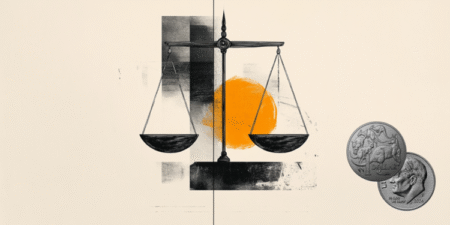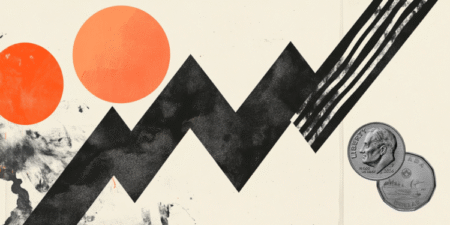At a time when preparing for retirement increasingly relies on individual savings, Individual Retirement Accounts (IRAs) are establishing themselves as essential pillars of retirement planning in the United States.
But how much do you really need to have set aside by age 30, 40 or 60? A recent study by Fidelity, based on an analysis of 16.8 million IRA accounts, sheds valuable light on average balances by age. An opportunity to compare your situation and, above all, to draw concrete conclusions.
Striking differences between generations
Data for the fourth quarter of 2024 reveal a logical but impressive progression of IRA balances with age. Here are the average balances observed:
- Generation Z (13-28 years): $6,672
- Millennials (29-44 years): $25,109
- Generation X (45-60 years): $103,952
- Baby Boomers (61-79): $257,002
As the years go by, the cumulative effect of regular contributions, stock market performance and compounding inflates the amounts. This growth is a powerful reminder of the benefits of starting an IRA early, even with small amounts.
What you should have saved for retirement
In addition to observed averages, Fidelity offers benchmarks to let you know if you’re on the right track. For example:
|
Age |
Average IRA balance |
Recommended savings |
|
20s |
$8,023 |
|
|
30s |
$21,304 |
1x annual salary |
|
40s |
$57,326 |
3x annual salary |
|
50s |
$124,606 |
6x annual salary |
|
60s |
$233,781 |
8x to 10x annual salary |
|
70+ |
$297,988 |
These benchmarks allow you to set realistic goals while taking into account your own income.
If you earn $75,000 a year, aiming for $225,000 in savings by age 40 is a good target, according to Fidelity.
Source: Fidelity
The central role of IRAs in retirement planning
In a landscape where traditional pensions are gradually disappearing and Social Security is no longer enough to guarantee a comfortable standard of living, IRAs have become indispensable.
They often complement a 401(k), or even replace it in the absence of a company plan.
The two main variants, the Traditional IRA and the Roth IRA, offer distinct tax advantages.
The former allows contributions to be deducted from taxable income (but withdrawals will be taxed later), while the latter taxes contributions upstream but exempts withdrawals.
In both cases, gains benefit from a snowball effect thanks to the absence of annual taxation.
The snowball effect of time and discipline
What long-term trends demonstrate is that IRA accounts benefit fully from the combination of regularity and patience.
With consistent contributions and a growth-oriented investment strategy, even modest amounts at the outset can be transformed, over decades, into substantial capital for retirement.
The progressive growth of IRA balances illustrates the power of compounding. The earlier you start, the more your savings benefit from a cumulative effect.
This doesn’t mean that it’s too late to start saving at an older age, but it does underline that acting early offers an advantage that’s hard to make up for.
When it comes to retirement planning, time remains a precious ally, provided you use it rigorously.
Concrete retirement strategies for every age
- In your twenties: Start contributing, even small amounts. The important thing is to get into the habit.
- In your thirties: Try to reach 1x your annual salary and give preference to dynamic investments.
- In your forties: Go up to 3x your salary and adjust if you’re behind.
- In your fifties: Use catch-up contributions authorized from age 50 ($8,000 in 2025).
- From age 60: Prepare for the transition to Required Minimum Distributions (RMD), mandatory from age 73.
IRA and automation: The key to regularity
One of the best ways to save regularly is to automate your IRA contributions.
By matching payments to the frequency of salaries (on the 15th and 30th of the month, for example), savers ensure that they remain disciplined, without having to think about it every month.
What’s more, it’s advisable to gradually increase the amounts, for example, by allocating an extra 1% each year when a salary increase occurs.
A powerful tool, provided it’s put to good use
Individual Retirement Accounts (IRAs) offer flexibility, tax advantages and growth potential, making them an essential tool in retirement planning.
Whether you’re a young worker or close to retirement, the important thing is to know where you stand, to compare without feeling guilty, and to adjust your strategy.
Finally, remember that Social Security alone will probably not be enough to cover the needs of a comfortable retirement. The IRA, properly used, can fill the gap, provided you act early… and regularly.
IRAs FAQs
An IRA (Individual Retirement Account) allows you to make tax-deferred investments to save money and provide financial security when you retire. There are different types of IRAs, the most common being a traditional one – in which contributions may be tax-deductible – and a Roth IRA, a personal savings plan where contributions are not tax deductible but earnings and withdrawals may be tax-free. When you add money to your IRA, this can be invested in a wide range of financial products, usually a portfolio based on bonds, stocks and mutual funds.
Yes. For conventional IRAs, one can get exposure to Gold by investing in Gold-focused securities, such as ETFs. In the case of a self-directed IRA (SDIRA), which offers the possibility of investing in alternative assets, Gold and precious metals are available. In such cases, the investment is based on holding physical Gold (or any other precious metals like Silver, Platinum or Palladium). When investing in a Gold IRA, you don’t keep the physical metal, but a custodian entity does.
They are different products, both designed to help individuals save for retirement. The 401(k) is sponsored by employers and is built by deducting contributions directly from the paycheck, which are usually matched by the employer. Decisions on investment are very limited. An IRA, meanwhile, is a plan that an individual opens with a financial institution and offers more investment options. Both systems are quite similar in terms of taxation as contributions are either made pre-tax or are tax-deductible. You don’t have to choose one or the other: even if you have a 401(k) plan, you may be able to put extra money aside in an IRA
The US Internal Revenue Service (IRS) doesn’t specifically give any requirements regarding minimum contributions to start and deposit in an IRA (it does, however, for conversions and withdrawals). Still, some brokers may require a minimum amount depending on the funds you would like to invest in. On the other hand, the IRS establishes a maximum amount that an individual can contribute to their IRA each year.
Investment volatility is an inherent risk to any portfolio, including an IRA. The more traditional IRAs – based on a portfolio made of stocks, bonds, or mutual funds – is subject to market fluctuations and can lead to potential losses over time. Having said that, IRAs are long-term investments (even over decades), and markets tend to rise beyond short-term corrections. Still, every investor should consider their risk tolerance and choose a portfolio that suits it. Stocks tend to be more volatile than bonds, and assets available in certain self-directed IRAs, such as precious metals or cryptocurrencies, can face extremely high volatility. Diversifying your IRA investments across asset classes, sectors and geographic regions is one way to protect it against market fluctuations that could threaten its health.
Read the full article here
















